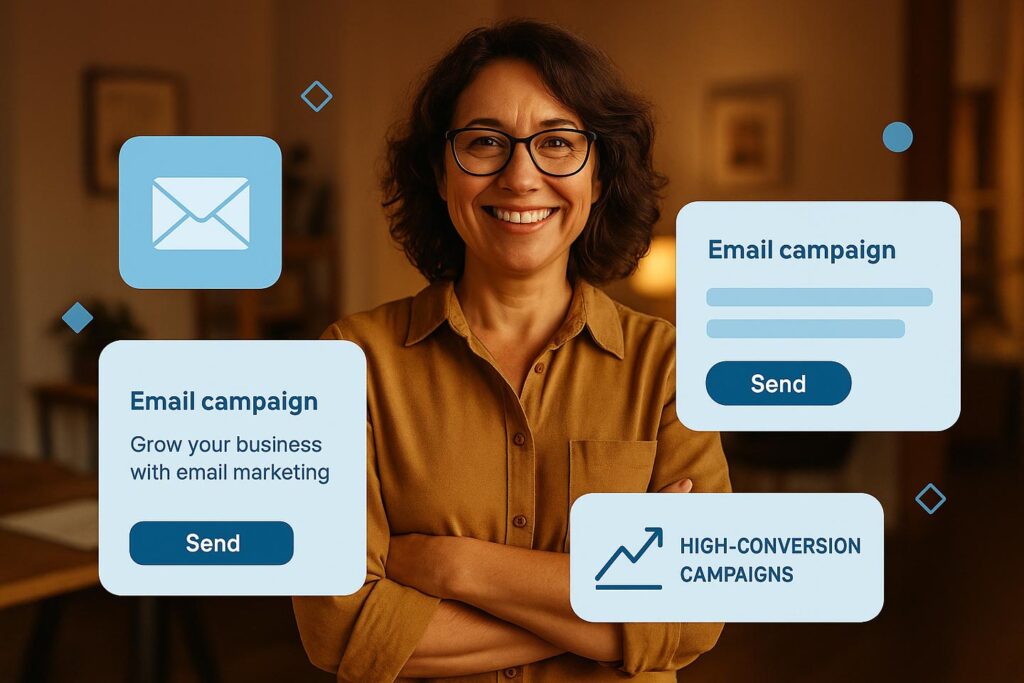Blogging has grown from a simple online journal into a powerful tool for building visibility, trust, and conversions. For eCommerce businesses in Long Island, it goes beyond publishing articles—it’s about creating content that answers customer needs, supports search rankings, and drives sales.
With rising competition in online retail, blogs offer lasting value by continuing to attract traffic long after publication. When combined with ecommerce seo services, they help businesses rank for relevant searches, reach local buyers, and build loyalty that turns one-time shoppers into repeat customers.
Why Blogging Is Still Essential for eCommerce SEO
Despite the rise of short-form videos, influencer promotions, and paid advertising, blogging continues to hold a crucial role in eCommerce. Blogs fuel search engine optimization by giving businesses more opportunities to rank relevant keywords. They also provide platforms to showcase expertise, answer customer questions, and integrate product promotions naturally.
An effective blog becomes a long-term asset because it continues to drive organic traffic even months or years after publication. For eCommerce stores in Long Island, it’s also a way to build community connections by weaving in local stories and references that resonate with nearby shoppers.
Benefits of Blogging for Online Stores
- Expands keyword coverage and boosts search rankings
- Builds trust by educating customers
- Supports product launches with detailed context
- Provides shareable content for social media and email campaigns
- Encourages customers to return for insights, not just purchases
1. Product How-Tos and Setup Guides
One of the most effective ways to capture customer interest is through how-to blogs and setup guides. These pieces allow eCommerce businesses to go beyond simply selling and instead demonstrate real-world uses of their products.
Tutorials and setup instructions not only help customers but also reduce return rates and customer service inquiries. They establish the brand as a reliable resource that solves problems while promoting sales at the same time.
Types of How-To Blog Content
- Step-by-step setup instructions for complex products
- Troubleshooting tips for common user issues
- Video or photo tutorials embedded into written guides
- Comparisons of different models or variations available
A structured approach like this can also improve user satisfaction and encourage them to make informed purchase decisions confidently.
Example Table: Blog Ideas for Product How-Tos
| Blog Idea | Purpose | Example Title |
| Setup Guide | Helps customers assemble products correctly | “How to Assemble Your Outdoor Furniture in 30 Minutes” |
| Troubleshooting | Reduces service calls and frustration | “5 Quick Fixes for Common Coffee Maker Issues” |
| Product Comparison | Assists in decision-making | “Which Wireless Earbuds Are Right for You?” |
| Usage Tips | Increases engagement with product | “Creative Ways to Use Your Stand Mixer” |
2. Local Lifestyle Blogs Featuring Products
Relating products to everyday life in Long Island gives eCommerce content a sense of authenticity. Lifestyle-focused blogs help potential customers picture how products connect to their routines, community events, or local traditions. As search engines continue to evolve, staying aligned with updates such as Google’s March 2025 core update ensures that this type of content remains visible and relevant.
For example, a fashion retailer might publish seasonal style guides that highlight outfits for Long Island beaches or vineyard outings. Similarly, a home goods brand could create blogs about furnishing small apartments or planning outdoor spaces for suburban homes, tying products directly to the lifestyles of their audience.
Localized Content Ideas
- “A Day in Long Island with Our Summer Accessories”
- “Perfect Kitchen Gadgets for Suffolk County Homes”
- “Outdoor Essentials for Long Island Picnics”
Positioning content in a local context fosters community identity and makes the blog more relatable to target customers.
3. Holiday Gift Guides for Long Island Buyers
Seasonal shopping continues to be one of the biggest opportunities for eCommerce stores. A holiday gift guide not only helps customers make decisions quickly but also drives higher-value purchases.
Gift guides are versatile and can be tailored for multiple occasions—winter holidays, Valentine’s Day, Mother’s Day, or even local summer festivals. These posts work especially well for SEO because customers often search directly for gift-related queries.
Subtopics for Gift Guide Blogs
- Budget-friendly gift options for different audiences
- Curated collections of trending products
- Exclusive seasonal bundles or limited-edition items
- Local-inspired themes like “Best Gifts for Long Island Wine Lovers”
These types of blogs also encourage customers to share with friends and family, extending reach beyond immediate buyers.
4. Customer Spotlights and User-Generated Content
Highlighting customer stories adds authenticity to eCommerce content. Blogs featuring real people and their experiences with products resonate more deeply than sales-driven messaging. In fact, even a long island digital marketing agency would emphasize that authentic storytelling often creates stronger engagement than traditional promotions.
Spotlights could include interviews, product reviews, or lifestyle stories submitted by customers. This approach not only builds trust but also encourages others to contribute, creating a sense of community around the brand.
Ideas for Customer-Driven Blog Posts
- “How One Family Redesigned Their Backyard with Our Outdoor Products”
- “Customer Spotlight: From Casual Hobbyist to Professional with Our Tools”
- “Shared by You: Favorite Recipes Using Our Kitchen Gadgets”
User-generated content becomes a cost-effective way to sustain blogging without always creating everything internally.
5. Blog Series Based on FAQ and Search Intent
Shoppers frequently have recurring questions about products, store policies, or broader industry trends. Turning these queries into a blog series not only improves customer satisfaction but also strengthens SEO by addressing the exact topics people are searching for. Insights from tools like the Merchant Opportunities Report can also help identify visibility issues, guiding businesses toward the most valuable questions to answer.
When blogs are crafted around real search intent, they have a greater chance of appearing in featured snippets or answer boxes. This boosts visibility while positioning the business as an authority that provides clear and reliable solutions.
Blog Ideas from FAQs
- “How to Choose the Right Size When Ordering Shoes Online”
- “What to Know Before Buying Electronics from an eCommerce Store”
- “Shipping FAQs: Understanding Delivery Timelines for Long Island Orders”
Publishing a series over time ensures that blogs are cohesive and interconnected, guiding customers through different stages of their decision-making journey.
How to Optimize eCommerce Blogs for Local SEO
Writing valuable content is only part of the equation—optimizing it for local SEO ensures that the right audience can discover it. For Long Island eCommerce businesses, this means tailoring blog posts with location-based terms and details that connect with nearby buyers.
Local SEO Optimization Strategies
- Include location references naturally in headlines and examples
- Highlight community events or seasonal activities tied to Long Island
- Add schema markup for products and local businesses
- Optimize meta descriptions and URLs with relevant keywords
- Use internal linking between product pages and blogs
Local SEO makes it easier for businesses to stand out against national competitors by reaching customers searching within their community.
Integrating CTAs and Cross-Selling in Posts
A blog should guide readers toward the next step in their journey, whether it’s making a purchase, joining a mailing list, or exploring related products. Calls-to-action (CTAs) and cross-selling elements can be seamlessly woven into blog posts without feeling intrusive.
Methods to Incorporate CTAs
- End each blog with a relevant product suggestion
- Include contextual links to complementary products
- Add “related items” carousels within posts
- Use blog series to encourage readers to move from one article to another
When CTAs are natural and relevant, they feel like helpful suggestions rather than sales pitches, keeping the overall tone informative.
Conclusion
Blogging remains a powerful strategy for eCommerce businesses in Long Island. From how-to guides and lifestyle posts to gift guides and user-generated content, each blog format supports both SEO visibility and sales growth. Optimizing for local audiences and integrating subtle CTAs ensures that every piece of content works toward long-term business success.
By implementing these approaches, eCommerce businesses can transform their blogs into strategic assets that connect with customers, strengthen brand identity, and drive measurable results. To learn more about building a content strategy tailored to your business, contact today.
FAQs
1. How often should an eCommerce business publish blogs?
Consistency is more important than frequency. Publishing one high-quality blog per week is often more effective than several rushed posts.
2. What type of blog content generates the most sales for online stores?
Content that solves customer problems, such as how-to guides and product comparisons, typically converts better than generic posts.
3. Should eCommerce blogs focus only on products?
Not necessarily. Mixing product-focused content with lifestyle, educational, and customer-driven stories creates a more balanced and engaging blog.
4. How can blogging help with customer retention?
Blogs keep customers engaged beyond transactions by providing value, insights, and inspiration that encourage repeat visits and loyalty.
5. Is it important to measure blog performance?
Yes. Tracking metrics like organic traffic, time on page, and conversions helps determine which topics resonate most with audiences.



